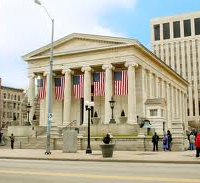Correctly identifying and implementing allowable expenses are critically important when planning for an Historic Tax Credit Restoration. Contact BrainWave Historic Consulting to clarify any item which may impact your Qualified Restoration Expenditure (QRE) Credits
 |
|
Public buildings may require alterationand expansions for access and modern usage requirements. These alterations need to be designed to be compatible or unobtrusive to the original historic envelope. |
The Federal government has guidelines concerning the deductibility of QRE expense of items it considers to be "alterations" to the original historic building envelope. This is important in that it often involves public access and safety-code components. It is sometimes difficult to distinguish where a tax credit expenditure ends, and what might be considered a project-jeopardizing alteration. From various sources within the Historic Preservation regulations, there are some general guidelines to follow:
The Federal guidelines are more defined on QRE eligibility or enlargement of the historic "exterior envelope" in tax credit projects. Most of these enlargement expenses are not QRE eligible.
The federal guidelines speak to the total exterior volume of the entire building, from basement to roof. Generally, volumes withing the envelope may be adjusted, but the entire scope may not be expanded and still be considered a valid QRE. This doesn't mean you cannot expand the structure, but that these expenses are not QRE eligible. And these expansions must be stylistically compatible, and not distroy the impact of the historic fabric and envelope. There is an entire body of work devoted to how new additions necessary for current viability can be added to historic structures without compromising integrity.
For more information about building alterationand expansion QRE Items, please contact us.
(Updated may 2016)